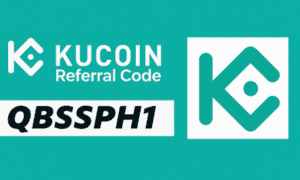In a digital economy dominated by subscription models and high-cost entry barriers, flexible and granular value exchange has become a necessity. Creators, businesses, and consumers are searching for alternatives to rigid payment structures. This is where micropayments come into play.
Micropayments are very small digital transactions, often just a few cents, but their impact is substantial. This article explores the full spectrum of micropayment system benefits and examines how to navigate policies, restrictions, and cash-out methods to turn these micro earnings into real value.
What Are Micropayment Systems: A Quick Primer
A micropayment system is a specialized digital infrastructure built to process extremely small transactions efficiently. Traditional credit card payments have fixed fees that make sub-dollar transactions impractical, but micropayment systems operate with low overhead and high scalability.
These systems support:
- Paying for a single premium article • Tipping a live streamer • Buying a virtual item or in-game currency
They often work by bundling small charges or using optimized low-cost networks. This makes micropayment systems the backbone of the modern pay-per-use digital economy.
The Transformative Benefits for Users and Consumers
Micropayments change how users consume digital content. Their key advantages include:
Access to Niche and Premium Content Without Commitments
Micropayments eliminate subscription fatigue. Instead of paying monthly fees for services used occasionally, consumers can:
- Purchase one piece of content • Unlock one feature • Access one educational resource
This puts financial control back in the hands of users.
Enhanced Flexibility and Control Over Spending
Micropayments allow consumers to manage spending on a per-item basis rather than through recurring fees. This creates a healthier approach to digital consumption and budgeting.
Fairer Compensation for Creators
Small direct payments create a transparent and fair link between creators and consumers. Users know their contributions directly support the creators they value, fostering trust and a stronger community.
Strategic Advantages for Businesses and Creators
Micropayments open new opportunities and reshape digital monetization strategies.
Unlocking New Revenue Streams
Micropayments make it possible to monetize items that were once difficult to sell individually:
- Premium articles • Exclusive guides • In-game items • Digital tools • Tutorials and educational materials
This model strengthens the creator economy by diversifying income beyond ads and sponsorships.
Reducing Transaction Costs
With traditional payment processors, fixed fees make small purchases inefficient. Micropayment systems reduce or eliminate these costs, making low-value transactions profitable.
Improving Conversion Rates
A small payment of a few cents is far less intimidating than a full subscription. Lower barriers increase trial rates, which boosts conversions and long-term customer loyalty.
Supporting a Fair and Flexible Creator Ecosystem
Micropayments allow independent creators to monetize directly without managing complex subscription systems or relying on third-party platforms.
Gaining Valuable User Data
Each micro-transaction reveals user preferences. This data helps businesses refine content, develop better products, and optimize marketing decisions.
Beyond Receiving Payments: Navigating Policies and Restrictions
Receiving micropayments is only the first step. To fully benefit, users must understand system policies 소액결제 정책 and cash-out options.
Understanding Micropayment Policies and Restrictions
Creators may encounter messages such as:
- Your payment service is restricted due to the payment agency’s policy • Your use of the service is blocked
These restrictions exist to prevent fraud, money laundering, and suspicious activity.
Common triggers include:
- Unusual transaction patterns • Incomplete identity verification • Unclear sources of funds
Resolving restrictions usually requires:
- Identity verification • Documentation of payment sources • Direct communication with platform support
Navigating these issues is part of managing a sustainable micropayment ecosystem.
Efficient Methods for Cashing Out Micropayments
Creators must choose cost-effective withdrawal methods that protect their earnings.
Direct Bank Transfer
Pros: Secure and widely accepted Cons: High minimum withdrawal and fixed fees reduce value for small amounts
Payment Gateways (PayPal, Stripe)
Pros: Familiar and convenient Cons: Percentage fees + fixed charges make tiny withdrawals inefficient
Third-Party Aggregators and Specialized Cash-Out Services
Pros: Lower fees, faster processing, often optimized for small transactions Cons: Fee structures vary; reliability must be researched
When choosing a cash-out method, creators must evaluate:
- Transaction fees • Minimum withdrawal thresholds • Processing speed • Overall security and reputation
Selecting the right method maximizes the value of each micropayment.
The Future of Micropayments: Trends and Innovations
Industry insights indicate a strong growth trajectory driven by the creator economy and digital consumer behavior. Expected innovations include:
- Blockchain-based micro-transactions • Automatic IoT micropayments between smart devices • Deep integration of micropayments into mainstream platforms
These trends highlight long-term potential across sectors.
Conclusion
Micropayment systems empower users with flexibility and fairness, while giving creators sustainable, diverse revenue opportunities. But the full value emerges only when creators understand payment policies and optimize their cash-out strategies.
Mastering micropayment restrictions, selecting efficient withdrawal methods, and staying informed about system policies are essential to transforming small digital earnings into meaningful revenue.
Explore micropayment platforms https://www.family-paybank.com study their policies, and compare cash-out methods. Understanding the system will help you maximize earnings and build a stronger, more sustainable digital income strategy.
Frequently Asked Questions
Q1: What is the main difference between micropayments and regular payments A1: Micropayments involve very small transactions requiring specialized systems to avoid high fixed fees common with traditional payment methods.
Q2: How do micropayments benefit consumers A2: They offer pay-per-use flexibility, reduce subscription fatigue, and improve budget control.
Q3: How do micropayments benefit creators and businesses A3: They unlock new revenue streams, lower transaction costs, increase conversions, and offer detailed user insights.
Q4: Why might a micropayment transaction be restricted A4: Restrictions occur due to anti-fraud policies, unverified accounts, or unclear transaction sources.
Q5: What are common methods for cashing out micropayments A5: Bank transfers, standard payment gateways, and specialized third-party services, each with varying fees and processing speeds.




































